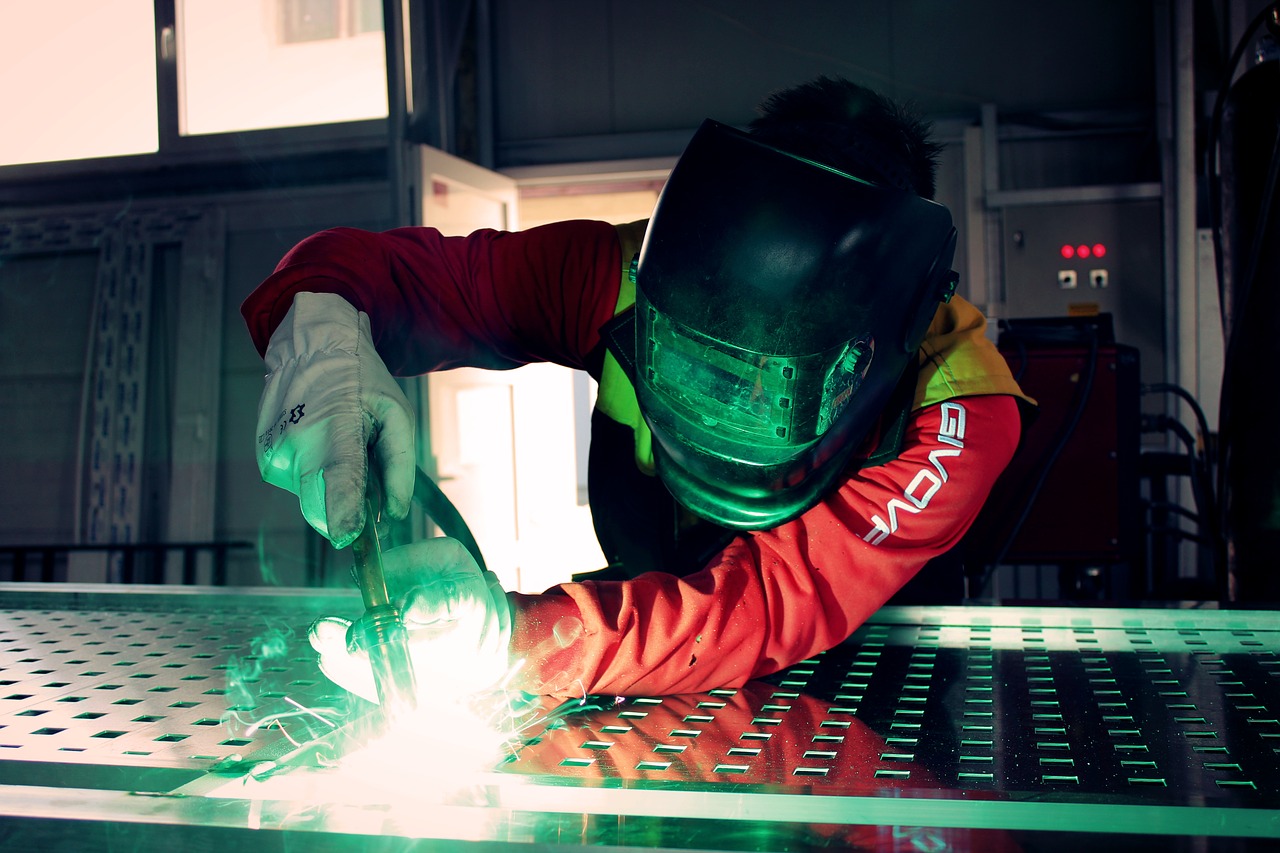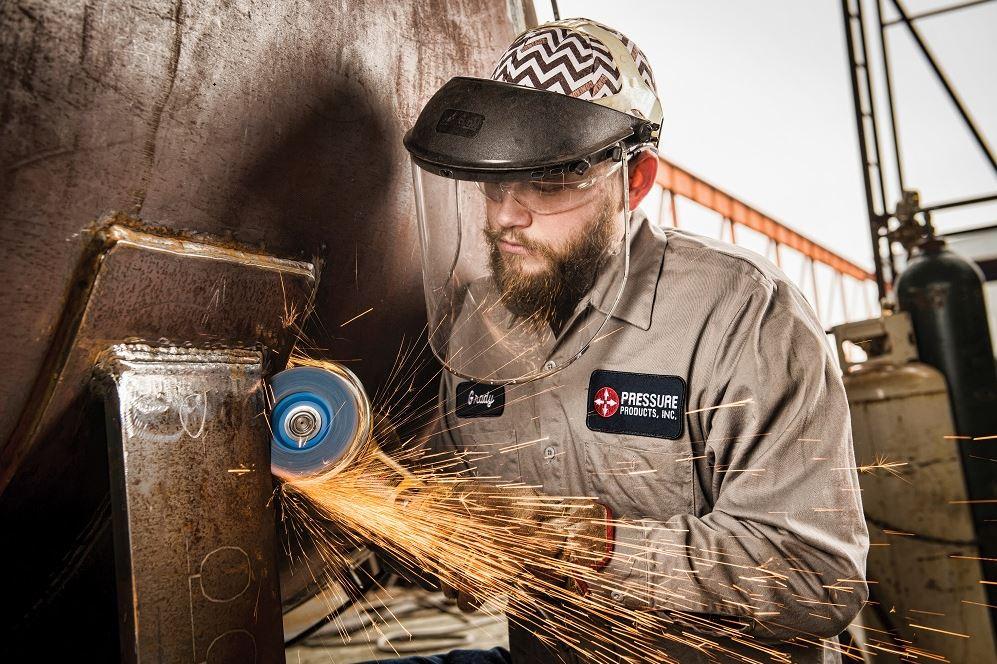Steps for perfect fusion with Montana Mobile Welding and Repair Belgrade Fabrication
Wiki Article
All Concerning Welding: Secret Insights Into Techniques and Ideal Practices for Success
Welding encompasses a variety of methods, each suited for certain materials and applications. Comprehending these approaches, such as GMAW, SMAW, and TIG, is necessary for accomplishing excellent results. The appropriate devices and safety practices can not be forgotten. As prep work and fixing play important duties in the welding process, understanding these components can considerably boost the quality of the end product. What are the vital factors that guarantee a successful weld?Comprehending Different Welding Methods
Welding strategies include a range of techniques, each matched to particular applications and materials. Amongst the most usual strategies are Gas Steel Arc Welding (GMAW), Secured Metal Arc Welding (SMAW), and Tungsten Inert Gas Welding (TIG) GMAW, likewise referred to as MIG welding, is preferred for its speed and adaptability, making it ideal for slim products. SMAW, or stick welding, is preferred for its simpleness and performance in outdoor settings, especially with thicker metals. TIG welding offers accuracy and control, making it ideal for detailed job and non-ferrous steels (Belgrade). Each strategy has its one-of-a-kind benefits and factors to consider, enabling welders to select the very best technique based upon the project's requirements, product kind, and preferred results. Comprehending these techniques is necessary for effective weldingNecessary Welding Devices and Devices
While various welding strategies require particular abilities, the appropriate tools and devices are equally important for achieving quality outcomes. Important welding devices consists of welding makers, which vary relying on the technique-- such as MIG, TIG, or stick welding. Safety equipment, including aprons, safety helmets, and handwear covers, assurances safety and security and convenience throughout the process. Furthermore, components and clamps help protect materials in position, ensuring accuracy in welds. Consumables like welding poles, cord, and shielding gas are additionally essential parts that influence the top quality of the weld. Furthermore, devices such as cutters and mills help with surface area preparation and post-weld completing, adding to a professional end result. Spending in top quality equipment ultimately enhances the effectiveness and effectiveness of welding jobs.Security Practices in Welding
Appropriate security practices are essential in the welding sector to shield workers from potential dangers. Welders need to use appropriate individual protective devices (PPE), including headgears with correct shading, gloves, and flame-resistant apparel. Ample air flow is crucial to decrease exposure to hazardous fumes and gases produced during the welding procedure. In addition, workers should be learnt the correct handling of welding devices to stop accidents. Fire safety steps, such as maintaining flammable materials away from the welding location and having fire extinguishers easily available, are necessary. Routine inspections of equipment and work areas can help determine prospective hazards prior to they bring about crashes. By sticking to these safety practices, welders can develop a safer working setting and decrease dangers connected with their trade.Readying Products for Welding
Preparing products for welding is a crucial action that substantially influences the quality and integrity of the end product (Belgrade Welding). Proper preparation includes cleaning the surfaces to eliminate pollutants such as corrosion, oil, and dust, which can jeopardize the weld. Strategies such as grinding, sanding, or making use of solvents are generally used to achieve a tidy surface area. In addition, making certain that the materials fit together comfortably is essential; voids can cause weak welds. It's likewise important to consider the alignment and positioning of the components, as this will certainly influence the convenience of welding and the last result. Finally, picking the appropriate filler material and guaranteeing compatibility with the base steels is vital for attaining strong, sturdy weldsTips for Achieving High-Quality Welds
Attaining top quality welds calls for interest to detail and adherence to best methods throughout the welding procedure. Correct joint prep work is important, guaranteeing surfaces are tidy and complimentary from pollutants. Choosing the proper filler material and welding technique based on the base metals is vital for ideal bonding. Keeping consistent traveling speed and angle while welding can advertise and prevent flaws uniformity. Furthermore, controlling heat input is important; excessive warmth can bring about bending and weakened joints. Frequently checking the welds during the process permits immediate adjustments if needed. Finally, employing appropriate post-weld therapies, such as cleaning and tension alleviation, can boost the longevity and integrity of the weld, inevitably making sure a successful result.Fixing Usual Welding Issues
Welding frequently offers challenges that can impact the quality and honesty of the last item. Typical concerns such as porosity, inconsistent weld grains, and overheating can emerge, each needing specific repairing techniques. Understanding these problems is vital for welders to improve their abilities and achieve suitable outcomes.Porosity Issues Clarified
Porosity can usually be forgotten, it stays a vital problem in welding that can compromise the integrity of a finished item. Porosity refers to the presence of little gas pockets within the weld grain, which can lead and weaken the joint to early failing. This trouble normally emerges from pollutants, moisture, or improper shielding gas protection throughout the welding procedure. To minimize porosity, welders need to verify that the base products are dry and tidy, make use of proper securing gases, and keep regular welding specifications. On a regular basis evaluating the equipment and atmosphere can likewise assist identify prospective problems before they show up in the weld. Dealing with porosity effectively is necessary for accomplishing strong, resilient welds that meet quality standards.
Inconsistent Weld Beans
Irregular weld beads can substantially influence the quality and stamina of a completed item. Numerous elements add to this concern, including inappropriate travel rate, inaccurate amperage setups, and inconsistent electrode angles. When the welder relocates too rapidly, a grain may show up narrow and do not have penetration, while relocating as well gradually can create extreme accumulation. Additionally, making use of the incorrect amperage can lead to either undercutting or excessive spatter, both of which compromise weld integrity. The welder's technique, such as inconsistent torch movement, can additionally lead Welding to irregular bead appearance. To mitigate these issues, welders must focus on keeping stable, controlled motions and ensuring proper equipment setups to accomplish harmony in their welds. Consistency is essential to achieving solid and trustworthy welds.Getting Too Hot and Warping Issues
Extreme heat during the welding procedure can cause substantial overheating and warping concerns, influencing the structural stability of the work surface. These troubles commonly show up as distortion, which can compromise positioning and fit-up, making more assembly testing. Factors adding to overheating consist of the option of welding parameters, such as voltage and take a trip rate, as well as the kind of material being bonded. To mitigate these problems, welders ought to keep regular traveling rate and appropriate warm input while keeping an eye on the workpiece temperature. In addition, preheating or post-weld heat therapy can assist alleviate stress and anxieties triggered by rapid cooling - Belgrade Welding. Normal evaluation and adherence to ideal methods are necessary in stopping overheating and making certain the durability and dependability of bonded structuresOften Asked Inquiries
What Are the Occupation Opportunities in the Welding Industry?
The welding industry supplies diverse profession possibilities, consisting of settings as welders, designers, educators, and assessors. Experts can work in production, construction, aerospace, and auto sectors, gaining from strong need and affordable incomes in various roles.Just How Can I Boost My Welding Rate Without Sacrificing Quality?
To enhance welding speed without giving up high quality, one must exercise reliable techniques, maintain tools, maximize settings, and enhance hand-eye coordination. Normal training and seeking feedback can also significantly contribute to attaining quicker, high-grade welds.What Qualifications Are Offered for Welders?
Many certifications exist for welders, consisting of those from the American Welding Culture (AWS), the National Center for Building Education And Learning and Research (NCCER), and numerous industry-specific organizations. These credentials enhance employability and demonstrate skill proficiency.How Does Welding Impact the Characteristics of Metals?
Welding affects the residential properties of metals by changing their microstructure, which can result in changes in toughness, hardness, and ductility. Warm input and air conditioning prices throughout the process greatly affect these material features.Can I Bonded Dissimilar Metals Together?

Report this wiki page